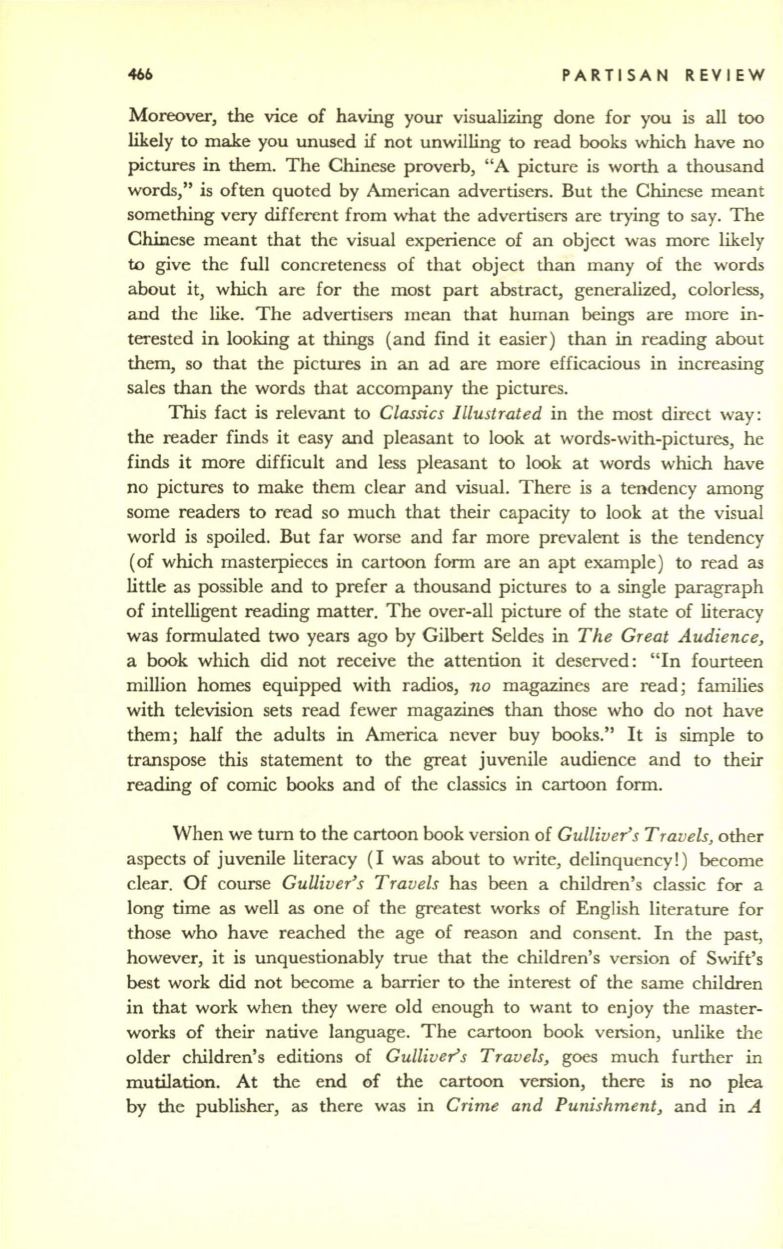
466
PARTISAN REVIEW
Moreover, the vice of having your visualizing done for you is all too
likely to make you unused
if
not unwilling to read books which have no
pictures in them. The Chinese proverb, "A picture is worth a thousand
words," is often quoted by American advertisers. But the Chinese meant
something very different from what the advertisers are trying to say. The
Chinese meant that the visual experience of an object was more likely
to
give the full concreteness of that object than many of the words
about it, which are for the most part abstract, generalized, colorless,
and the like. The advertisers mean that human beings are more in–
terested in looking at things (and find it easier) than in reading about
them, so that the pictures in an ad are more efficacious in increasing
sales than the words that accompany the pictures.
This fact is relevant to
Classics Illustrated
in the most direct way:
the reader finds it easy and pleasant to look at words-with-pictures, he
finds it more difficult and less pleasant to look at words which have
no pictures to make them clear and visual. There is a tendency among
some readers to read so much that their capacity to look at the visual
world is spoiled. But far worse and far more prevalent is the tendency
(of which masterpieces in cartoon form are an apt example) to read as
little as possible and to prefer a thousand pictures to a single paragraph
of intelligent reading matter. The over-all picture of the state of literacy
was formulated two years ago by Gilbert Seldes in
The Great Audience,
a book which did not receive the attention it deserved: "In fourteen
million homes equipped with radios,
no
magazines are read; families
with television sets read fewer magazines than those who do not have
them; half the adults in America never buy books." It is simple to
transpose this statement to the great juvenile audience and to their
reading of comic books and of the classics in cartoon form.
When we turn to the cartoon book version of
Gulliver's Travels,
other
aspects of juvenile literacy (I was about to write, delinquency!) become
clear. Of course
Gulliver's Travels
has been a children's classic for a
long time as well as one of the greatest works of English literature for
those who have reached the age of reason and consent. In the past,
however, it is unquestionably true that the children's version of Swift's
best work did not become a barrier to the interest of the same children
in that work when they were old enough to want to enjoy the master–
works of their native language. The cartoon book version, unlike the
older children's editions of
Gulliver's Travels,
goes much further in
mutilation. At the end of the cartoon version, there is no plea
by the publisher, as there was in
Crime and Punishment,
and in
A


